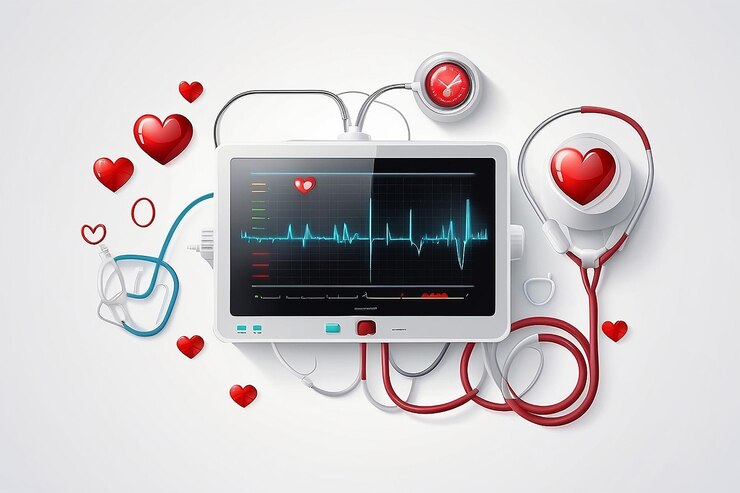I. Introduction
A. Importance of Internal Auditors in ISO 13485
Internal auditors play a crucial role in maintaining and improving quality within organizations adhering to ISO 13485 standards. They ensure that quality management systems (QMS) comply with regulatory requirements and internal policies. By conducting thorough audits, internal auditors help identify areas for improvement, manage risks, and enhance overall product quality. Their expertise ensures that medical devices meet safety and efficacy standards, which is essential for regulatory compliance and customer trust.
B. Overview of ISO 13485 Internal Auditor Training
ISO 13485 Internal Auditor Training provides specialized education for professionals seeking to excel in quality audits within the medical device industry. The training covers the fundamentals of auditing principles, ISO 13485 requirements, and practical audit techniques. Participants learn to assess compliance, identify non-conformities, and drive improvements. Advanced training helps auditors develop critical thinking skills, refine their auditing techniques, and stay current with industry best practices.
II. Understanding ISO 13485 and Its Impact
A. What is ISO 13485?
ISO 13485 is an international standard that outlines the requirements for a quality management system (QMS) specific to the medical device industry. It focuses on ensuring that medical devices consistently meet regulatory requirements and customer expectations for safety and effectiveness. The standard covers all aspects of the product lifecycle, from design and development to production, installation, and servicing, providing a comprehensive framework for quality management.
B. Significance in the Medical Device Industry
ISO 13485 is critical in the medical device industry as it sets the benchmark for quality management practices. Compliance with this standard helps organizations meet stringent regulatory requirements, reduce the risk of non-compliance, and ensure that medical devices are safe and effective. Certification enhances credibility with regulators and customers, facilitates market access, and supports continuous improvement in quality management processes.
C. Role of Internal Auditors in Compliance
Internal auditors are integral to ensuring compliance with ISO 13485. They assess the effectiveness of the quality management system, verify adherence to standards, and identify areas for improvement. By conducting internal audits, auditors provide valuable insights into the organization’s operations, helping to address potential issues before they escalate. Their role is crucial in maintaining compliance, driving quality improvements, and achieving organizational excellence.
III. Key Components of ISO 13485 Internal Auditor Training
A. Core Curriculum and Learning Objectives
The core curriculum of ISO 13485 Internal Auditor Training includes understanding the standard’s requirements, mastering auditing techniques, and applying quality management principles. Learning objectives focus on developing skills for planning and conducting audits, evaluating compliance, and reporting findings. Participants gain knowledge of risk management, documentation control, and corrective actions, ensuring they can perform audits effectively and contribute to quality improvements.
B. Essential Skills Developed
Participants in ISO 13485 Internal Auditor Training develop essential skills such as critical thinking, analytical reasoning, and effective communication. They learn to identify non-conformities, assess the impact on quality management systems, and recommend improvements. Skills in managing audit processes, interpreting standards, and interacting with stakeholders are also refined. These competencies are crucial for conducting thorough audits and supporting organizational quality goals.
C. Training Methods and Resources
Training methods for ISO 13485 Internal Auditor programs include interactive workshops, case studies, and hands-on practice. Participants engage in simulated audits, review real-world scenarios, and discuss best practices. Resources such as training manuals, online modules, and access to industry experts enhance the learning experience. These methods ensure that participants gain practical knowledge and are well-prepared for real-world auditing challenges.
IV. Advanced Audit Techniques and Best Practices
A. Precision in Auditing Methods
Advanced audit techniques focus on precision and thoroughness. Techniques such as risk-based auditing and detailed process analysis help auditors identify potential issues with greater accuracy. Auditors learn to use specialized tools and methodologies to assess complex systems and ensure compliance with ISO 13485 requirements. Precision in auditing methods leads to more reliable findings and effective corrective actions, enhancing overall quality management.
B. Effective Risk Management Strategies
Effective risk management is a key component of advanced auditing. Auditors learn to evaluate risk factors, implement mitigation strategies, and monitor risk controls. Strategies include conducting risk assessments, analyzing risk data, and integrating risk management into audit processes. By effectively managing risks, auditors help organizations prevent potential issues and ensure that quality management systems are resilient and compliant.
C. Best Practices for Internal Audits
Best practices for internal audits involve systematic approaches to planning, conducting, and reporting audits. Practices include developing detailed audit plans, using standardized checklists, and maintaining clear documentation. Auditors are trained to follow a structured approach, ensure consistency, and provide actionable recommendations. Adhering to best practices enhances the effectiveness of internal audits and supports continuous improvement in quality management systems.
V. Implementing ISO 13485 Standards
A. Integration into Quality Management Systems
Integrating ISO 13485 standards into existing quality management systems involves aligning processes with the standard’s requirements. This includes updating policies, procedures, and documentation to reflect ISO 13485 guidelines. Organizations must ensure that all aspects of their operations, from design to production, are compliant with the standard. Effective integration helps maintain consistency and improve overall quality management.
B. Addressing Common Compliance Challenges
Common compliance challenges include gaps in documentation, inadequate risk management, and insufficient staff training. Addressing these challenges requires a proactive approach, such as conducting thorough gap analyses, implementing corrective actions, and providing targeted training. Regular internal audits and continuous monitoring also help identify and resolve compliance issues before they impact product quality.
C. Continuous Improvement and Feedback
Continuous improvement is essential for maintaining ISO 13485 compliance. Organizations should establish mechanisms for collecting feedback, monitoring performance, and implementing improvements. This involves regularly reviewing audit findings, addressing non-conformities, and making necessary adjustments to processes and procedures. A commitment to continuous improvement ensures that quality management systems remain effective and aligned with ISO 13485 standards.
VI. Navigating the Certification Process
A. Certification Requirements for Internal Auditors
Certification requirements for internal auditors include completing accredited training programs, gaining practical experience, and passing certification exams. Auditors must demonstrate proficiency in ISO 13485 standards and auditing techniques. Meeting these requirements ensures that auditors are qualified to assess compliance and contribute to quality management efforts effectively.
B. Preparing for Certification Exams
Preparing for certification exams involves studying ISO 13485 standards, practicing audit techniques, and reviewing sample questions. Candidates should focus on understanding the standard’s requirements, mastering auditing processes, and familiarizing themselves with exam formats. Utilizing study guides, attending review sessions, and participating in practice exams can enhance preparation and improve the likelihood of passing the certification exam.
C. Maintaining Certification and Professional Development
Maintaining certification requires ongoing professional development and adherence to continuing education requirements. Certified auditors should participate in workshops, seminars, and refresher courses to stay current with industry developments and regulatory changes. Engaging in continuous learning and professional growth ensures that auditors remain proficient and capable of meeting evolving quality management challenges.
VII. Conclusion
A. Recap of the Value of Advanced Auditor Training
Advanced ISO 13485 internal auditor training provides significant value by enhancing auditing skills, improving compliance, and supporting quality management efforts. It equips auditors with the expertise to conduct thorough audits, address complex issues, and drive continuous improvement. Investing in advanced training contributes to overall organizational success and quality excellence.
B. Encouragement to Pursue ISO 13485 Training
Pursuing ISO 13485 internal auditor training is a strategic investment in professional development and organizational quality. It offers the opportunity to gain specialized knowledge, enhance auditing capabilities, and achieve certification. By committing to advanced training, auditors can elevate their skills, contribute to quality management, and support the success of their organizations.
C. Final Thoughts on Achieving Audit Excellence
Achieving audit excellence through ISO 13485 training requires dedication, continuous learning, and a commitment to quality. Advanced training equips auditors with the tools and knowledge needed to excel in their roles, drive improvements, and ensure compliance. Embracing these principles leads to higher standards of quality, greater organizational success, and a stronger impact in the medical device industry.




